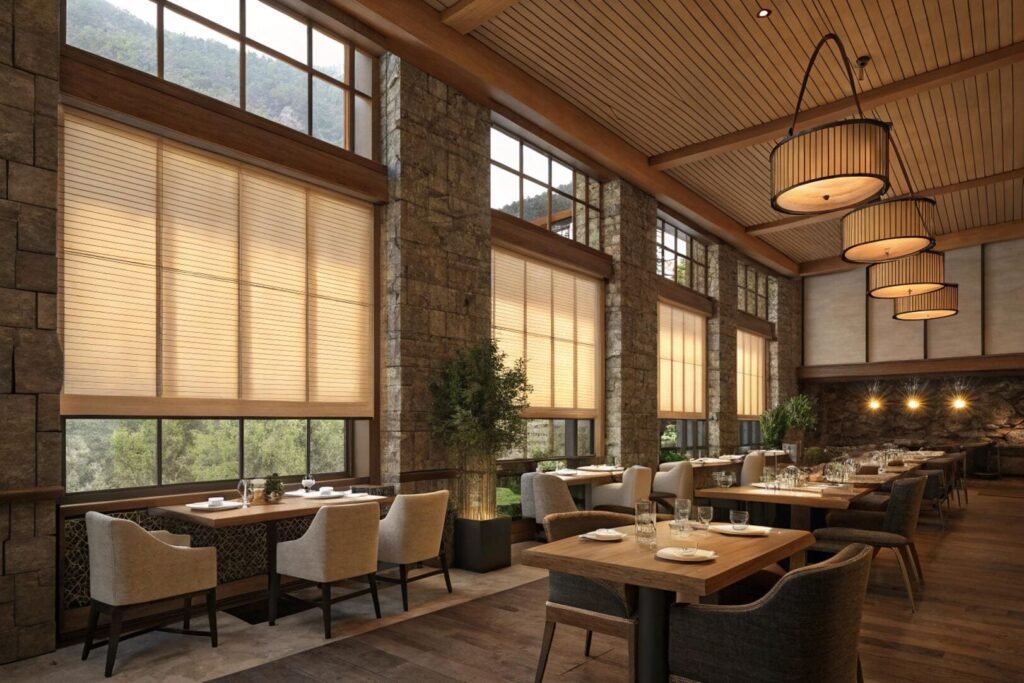Are you concerned about the hidden chemicals that might be off-gassing from your window treatments, impacting indoor air quality? Many traditional blinds contain volatile organic compounds (VOCs) that can compromise the health of occupants.
Low-VOC and non-toxic blinds are essential for maintaining healthy indoor air quality by significantly reducing the release of harmful chemicals. Choosing materials like natural fibers, certified PVC-free fabrics, or specific wood materials ensures a healthier living and working environment free from toxic off-gassing.
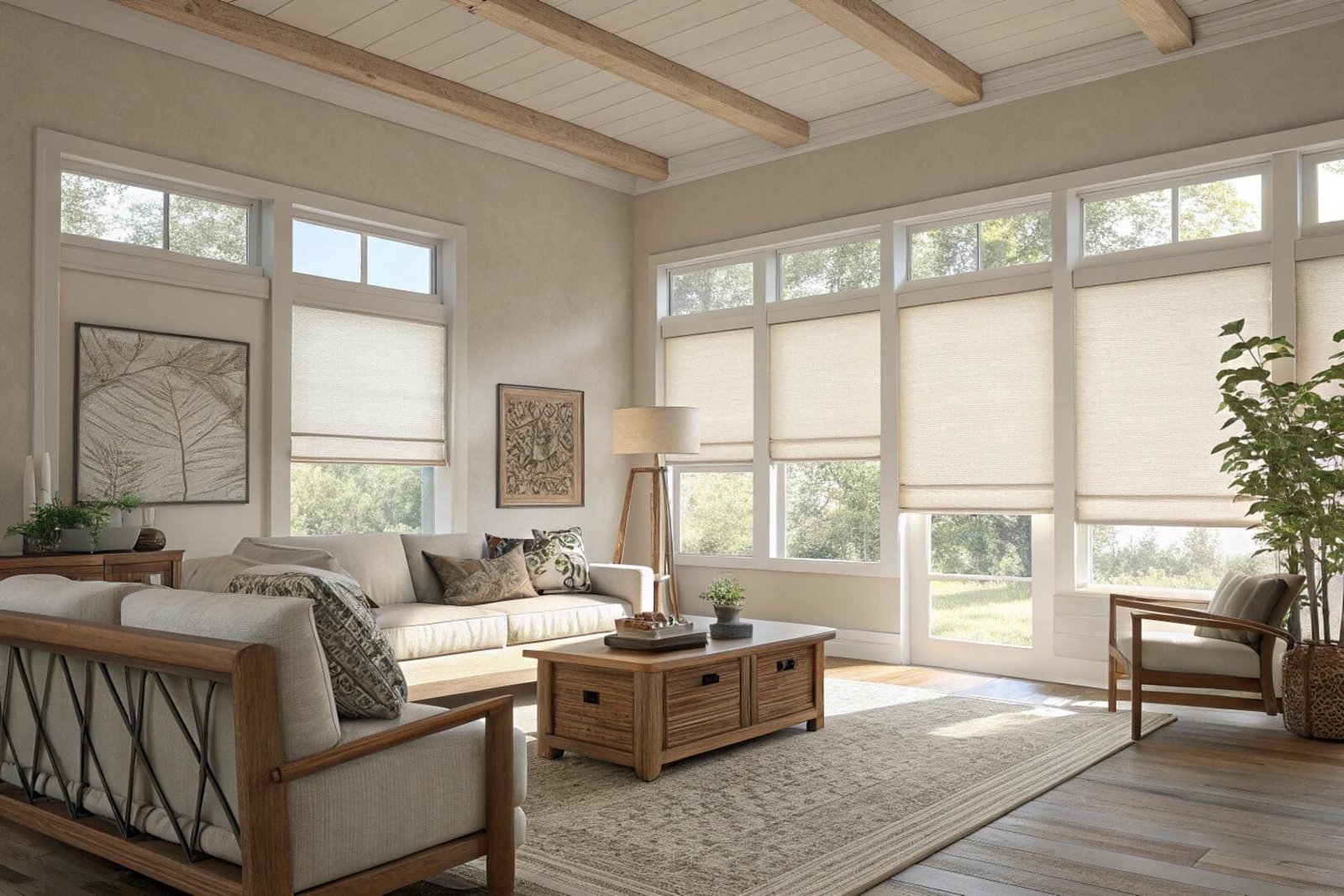
As a provider of smart shading solutions, I often emphasize the importance of indoor air quality[^1], particularly for sensitive environments like homes, schools, and healthcare facilities. What a blind is made of directly impacts the air we breathe. Let us explore what "low VOC" means for blinds and how to select truly non-toxic options for your projects, ensuring both aesthetic appeal and a breathable, healthy space.
What does low VOC mean to blinds?
Are you confused by terms like "VOC" and "low VOC" when selecting blinds, and wondering what they really mean for your project? Understanding this terminology is key to promoting healthier indoor spaces.
"Low VOC" for blinds means the product emits minimal levels of volatile organic compounds, which are chemicals that can off-gas into the air. These compounds can negatively impact indoor air quality and human health, so choosing low-VOC options helps create a safer, healthier environment.
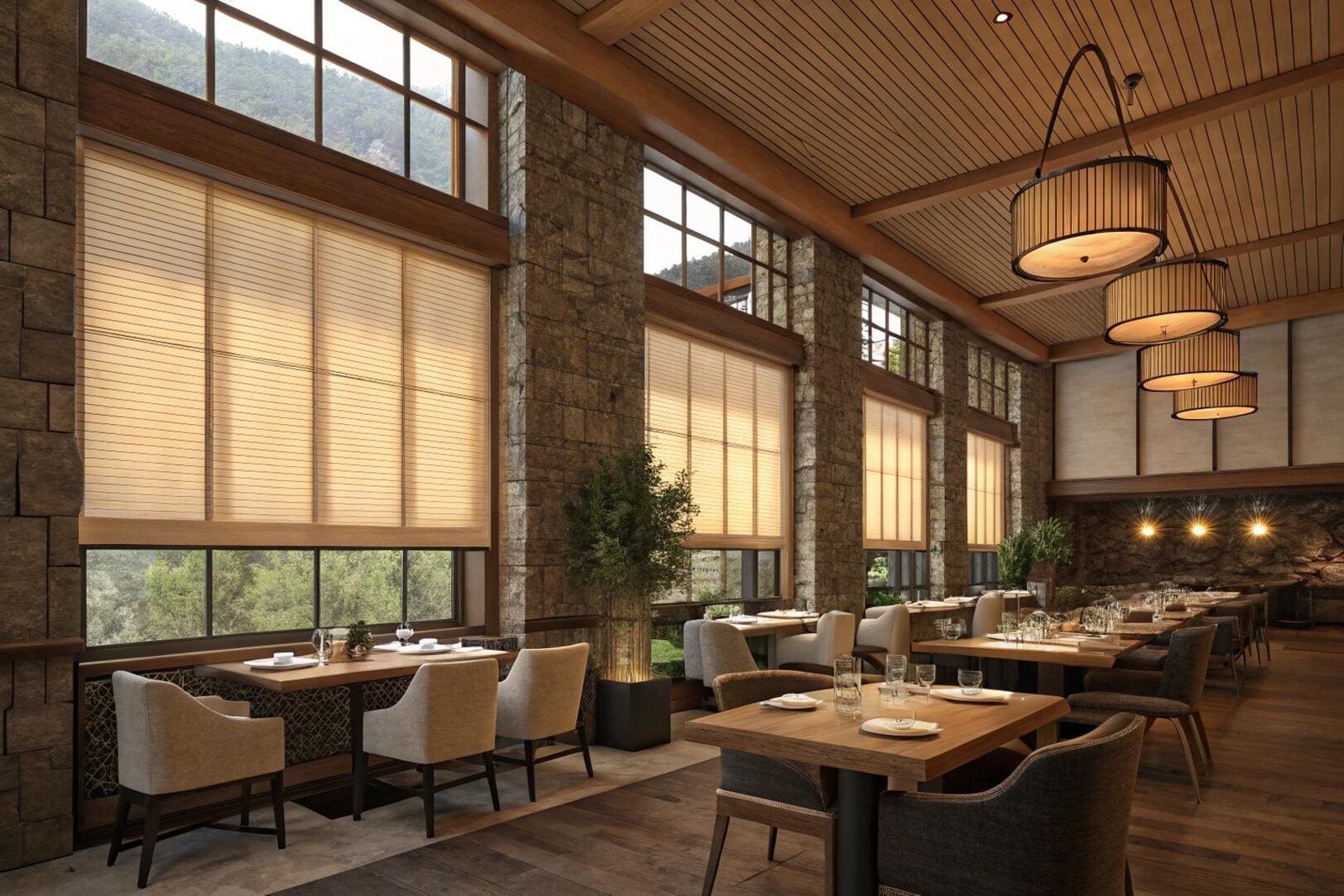
When I discuss healthy building materials with project contractors, VOCs are a major topic. Volatile organic compounds are carbon-containing chemicals that vaporize at room temperature. They are commonly found in many manufactured products, including paints, adhesives, furniture, and, yes, some window coverings. These chemicals can be released into the air through a process called off-gassing, contributing to indoor air pollution. Exposure to high levels of VOCs can lead to various health issues, ranging from short-term symptoms like headaches, dizziness, and respiratory irritation to more severe long-term effects.
For blinds, VOCs can come from several sources:
- Fabrics and Materials: Synthetic fabrics like PVC (polyvinyl chloride) based materials, some plastics, and certain dyes can contain and release VOCs.
- Coatings and Adhesives: Fire retardants, waterproofing agents, and adhesives used in manufacturing processes or to laminate layers of fabric can be significant sources of VOCs.
- Finishes: Any protective or decorative finishes applied to the blind components can also off-gas.
A "low VOC" blind means the manufacturer has either chosen materials that naturally have low emissions or has processed them in a way that minimizes the release of these harmful compounds. This might involve using water-based dyes, solvent-free adhesives, or specific weaving techniques. Certifications like Greenguard Gold[^2] or OEKO-TEX Standard 100 are important indicators for buyers, signifying that products have been tested for over 300 harmful substances and meet strict chemical emissions limits. Choosing low-VOC products is a proactive step toward ensuring better indoor air quality, which is beneficial for all occupants, especially children, the elderly, and those with respiratory sensitivities.
What blinds are non-toxic?
Are you searching for window treatments that genuinely contribute to a healthy living environment, free from harmful chemicals? Identifying truly non-toxic blinds[^3] is crucial for sensitive projects.
Non-toxic blinds are typically made from natural, unprocessed materials or synthetic options with certified low-VOC emissions. Materials like untreated wood, bamboo, cotton, linen, and specific PVC-free polyester fabrics are generally considered non-toxic, especially if they carry third-party certifications.
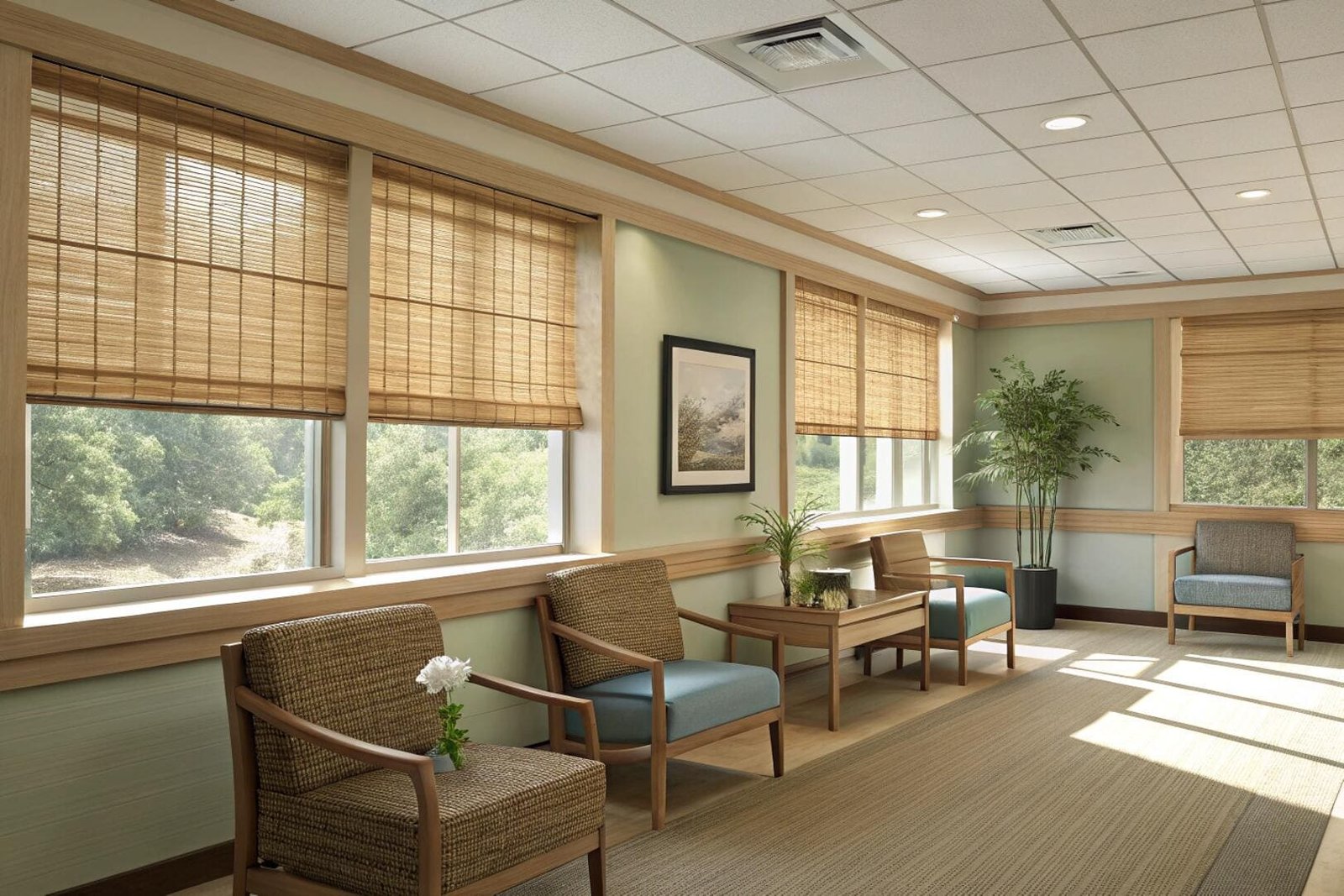
When clients prioritize health and sustainability, I guide them towards materials known for their minimal chemical footprint. Here is a breakdown of what constitutes a non-toxic blind and why:
| Material Type | Characteristics | Health & Environmental Benefits | Considerations for Projects |
|---|---|---|---|
| Natural Wood Blinds | Crafted from solid wood (e.g., basswood, cedar). Should be untreated or finished with natural oils/waxes for best non-toxic properties. | Naturally low in VOCs, highly durable, biodegradable. Contributes to a natural aesthetic. | Ensure wood is sourced sustainably (e.g., FSC certified). Avoid chemically treated or heavily varnished wood, which can off-gas VOCs. Roman Blinds in natural wood tones can be a good fit for this category. |
| Bamboo/Woven Wood | Made from fast-growing, renewable bamboo or other natural grasses woven together. | Rapidly renewable resource, naturally low in VOCs. Adds organic texture and warmth. | Check for minimal use of glues or dyes in the weaving process. Similar to Roman Blinds but with a distinct, natural woven appearance. |
| Organic Cotton/Linen | Fabrics made from certified organic cotton or linen, free from pesticides, bleached with peroxide or oxygen, and dyed with low-impact or natural dyes. | Biodegradable, very low off-gassing, soft texture, and natural aesthetics. Avoids chemical residues from conventional farming. | Ensure certifications like GOTS (Global Organic Textile Standard) for true organic status. Roller Blinds or Roman Blinds can be made from these fabrics, offering light filtering or room darkening capabilities depending on weave. |
| PVC-Free Polyester | Polyester fabrics that are explicitly certified PVC-free. Often coated with acrylic or other non-toxic polymers for durability and solar performance. | Avoids the plasticizers and potential off-gassing issues associated with PVC. Provides excellent durability, easy cleaning, and good light control. Many modern Roller Blinds or Zebra Blinds use these advanced materials. | Look for certifications like Greenguard Gold, OEKO-TEX Standard 100[^4], or Cradle to Cradle, which verify low chemical emissions. This is crucial for synthetic options. |
| Aluminum Blinds | Made from metal slats. Typically powder-coated for color and durability. | Inherently low off-gassing once cured. Highly recyclable. Durable and moisture resistant. Venetian Blinds are a classic example of this type. | Ensure the powder coating process adheres to environmental standards. Minimal off-gassing during use. |
| Honeycomb/Cellular Blinds (Eco-friendly options) | Made from spun-bound polyester or non-woven fabrics designed to trap air. Look for versions made from recycled content or without harmful binders/adhesives. | Excellent thermal insulation for energy efficiency. Eco-friendly versions use greener materials and manufacturing processes. | Verify specific certifications like Greenguard or OEKO-TEX confirming low VOCs and absence of harmful substances in their glues and dyes. Honeycomb Blinds are well-known for their energy-saving properties. |
When sourcing shades for my projects, I always advise looking for third-party certifications like Greenguard Gold or OEKO-TEX Standard 100. These certifications mean the product has been rigoruosly tested for chemical emissions and hazardous substances, ensuring it meets strict limits for indoor air quality. By focusing on these materials and certifications, we can confidently provide our clients with window treatments that align with their health and environmental values, without compromising on functionality or style. VelaBlinds offers various products, like Roller, Zebra, Shangri-la, Roman, Honeycomb, and Venetian blinds, and we can guide you to eco-friendly material options where available for these styles.
What are the most eco-friendly window coverings?
Are you seeking window coverings that not only perform well but also minimize environmental impact throughout their lifecycle? Exploring truly eco-friendly options is a growing priority for sustainable building projects.
The most eco-friendly window coverings are typically made from rapidly renewable resources like bamboo or cork, recycled content, or natural fibers such as organic cotton or linen. They often feature low-impact dyes and manufacturing processes, minimal chemical treatments, and are designed for durability and recyclability.
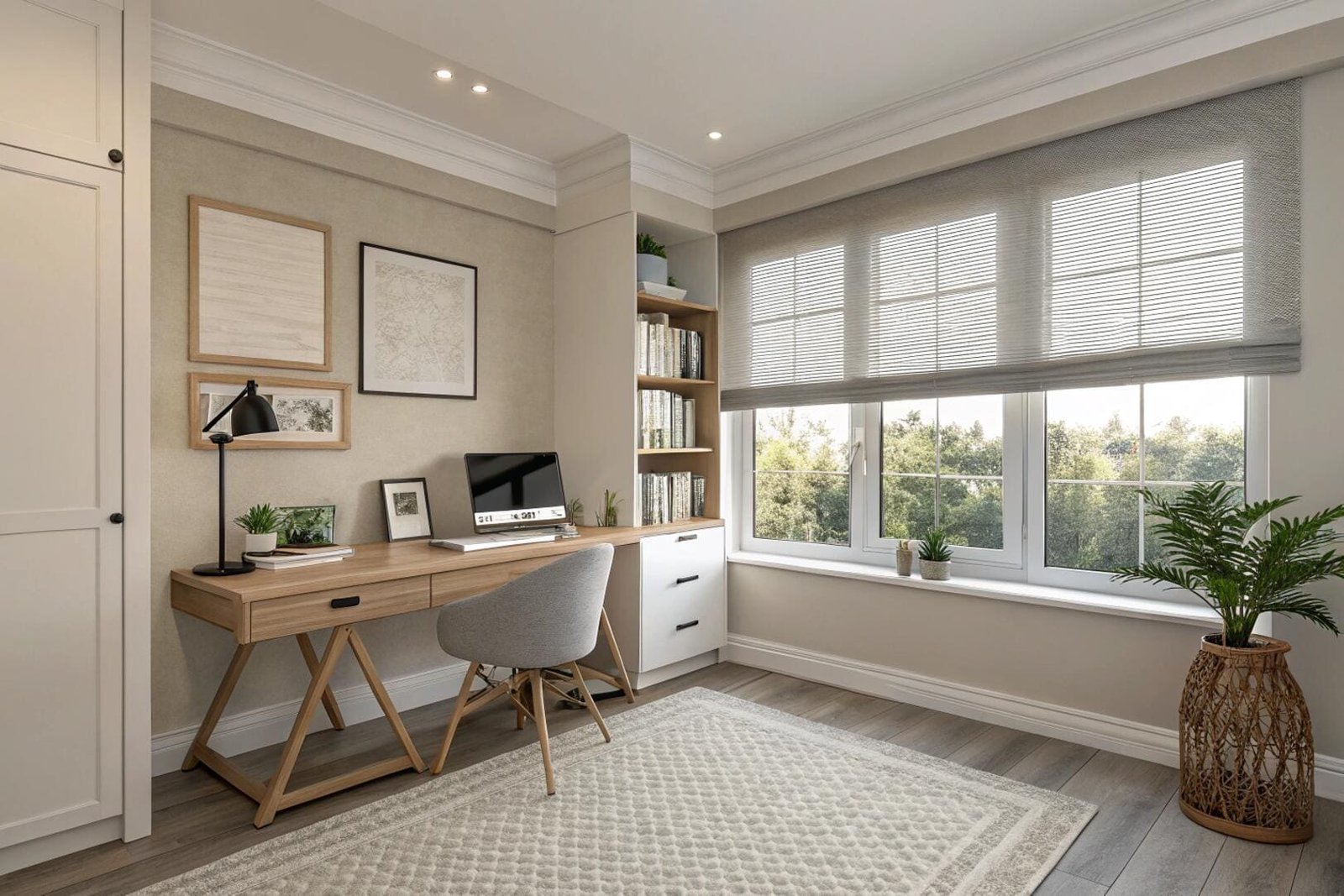
From my perspective, eco-friendliness in window coverings is a holistic concept that encompasses several factors beyond just the material. It includes sourcing, manufacturing process, product longevity, and end-of-life disposal.
| Eco-Friendly Factor | Description | Example Materials/Manufacturing | Benefits for Projects |
|---|---|---|---|
| Sustainable Sourcing | Materials harvested or produced in a way that does not deplete natural resources or harm ecosystems. Focus on rapid regrowth and responsible forestry. | Bamboo, cork, jute, hemp (fast-growing); FSC-certified wood (responsibly managed forests); recycled plastic (PET). | Reduces environmental footprint; supports ethical supply chains; provides natural aesthetics. Honeycomb Blinds, for instance, can incorporate materials with recycled content, reducing waste. |
| Low Environmental Impact Manufacturing | Processes that minimize energy consumption, water usage, waste generation, and harmful chemical emissions during production. | Water-based dyes, solvent-free adhesives, closed-loop manufacturing systems, use of renewable energy in factories. | Lowers embodied energy of the product; reduces air and water pollution; supports healthier manufacturing communities. Look for manufacturers with transparent production practices. VelaBlinds prioritizes working with OEM factories that adhere to responsible manufacturing. |
| Healthy Materials / Low-VOC | Components that do not off-gas harmful volatile organic compounds (VOCs) or contain toxic chemicals (e.g., heavy metals, formaldehyde, lead, BPA). | Natural fibers (organic cotton, linen without chemical finishes), PVC-free synthetic fabrics (e.g., polyester with non-toxic coatings), untreated wood, powder-coated aluminum. | Protects indoor air quality; safeguards occupant health; crucial for sensitive environments like homes, schools, and hospitals. Choosing Roman Blinds or Roller Blinds with certified fabrics ensures this. |
| Durability & Longevity | Products designed to last a long time, reducing the need for premature replacement. This minimizes resource consumption over the product’s lifespan. | High-quality materials and construction (e.g., robust hardware, durable fabrics). | Reduces waste in landfills; offers better long-term value; lowers replacement costs. Investing in durable Roller Blinds or Venetian Blinds means they will serve well for years. |
| Recyclability & End-of-Life | Materials that can be easily recycled into new products or are biodegradable at the end of their useful life. | Aluminum (highly recyclable), some polyesters (recyclable through specific programs), natural fibers (biodegradable). | Diverts waste from landfills; promotes a circular economy. Consider options like aluminum Venetian blinds for their high recyclability. |
| Energy Efficiency Contribution | Window coverings that help reduce heating and cooling loads, thereby lowering energy consumption in buildings. | Honeycomb Blinds (excellent insulation), Roller Blinds (solar control fabrics), Roman Blinds (thermal interliners). | Lowers utility bills; reduces carbon emissions from building operations. VelaBlinds specializes in energy-efficient solutions, including Honeycomb Blinds and certain Roller Blinds that help save energy. |
No single window covering is perfectly "eco-friendly" across all criteria. However, by considering these factors, project managers can make informed choices. For instance, Honeycomb Blinds excel in energy efficiency due to their cellular design [1][4]. Roller Blinds and Zebra Blinds with specific PVC-free, low-VOC fabrics offer excellent light control and durability [1][2][3][6]. When selecting products from VelaBlinds, we help you identify options that align with your sustainability goals, ensuring your projects are as green as possible.
Conclusion
Prioritizing low-VOC and non-toxic blinds is a vital step toward creating healthier indoor environments. By choosing natural materials or certified synthetics, you minimize chemical exposure, ensuring cleaner air and peace of mind for occupants in any space.
Build Healthier Spaces
Ready to source high-quality, non-toxic window treatments that enhance indoor air quality for your projects? Do not compromise on health or performance. Contact VelaBlinds today to explore our range of low-VOC certified and naturally safe shading solutions, tailored to meet your project’s unique needs and sustainability goals.
Email us at: info@velablinds.com
Extended FAQ Section
What are the health risks associated with high VOCs from blinds?
High levels of VOCs (volatile organic compounds) released from blinds and other interior products can pose various health risks, particularly in poorly ventilated spaces. Short-term exposure can lead to symptoms like headaches, dizziness, nausea, fatigue, and irritation of the eyes, nose, and throat. For individuals with existing respiratory conditions like asthma or allergies, VOC exposure can trigger or worsen symptoms. Long-term exposure, especially to certain VOCs, has been linked to more severe health issues, including liver and kidney damage, central nervous system disorders, and even certain types of cancer. Children, pregnant women, and the elderly are generally more vulnerable to the effects of VOCs due to their developing or compromised immune systems. Therefore, selecting low-VOC and non-toxic blinds is a crucial step in safeguarding occupant health and maintaining optimal indoor air quality in any building project.
How can I verify that a blind product is genuinely low-VOC or non-toxic?
Verifying that a blind product is genuinely low-VOC or non-toxic involves looking for specific third-party certifications. The most reputable certifications include Greenguard or Greenguard Gold, which test products for emission of over 10,000 chemicals and 360 VOCs, ensuring they meet strict chemical emission limits for healthier indoor environments. Another strong certification is OEKO-TEX Standard 100, which tests textile products for harmful substances throughout all stages of production. Additionally, certifications like Cradle to Cradle demonstrate a commitment to healthy materials and product circularity. Beyond certifications, review the product’s material safety data sheets (MSDS) or technical specifications from the manufacturer, which should list chemical components. Prioritize manufacturers that are transparent about their material sourcing and production processes, offering clear documentation of their environmental and health claims.
Do eco-friendly blinds compromise on performance or durability?
No, eco-friendly blinds do not necessarily compromise on performance or durability; in fact, many are designed to be highly robust and effective. Modern manufacturing advancements allow for the creation of sustainable materials that often exceed the performance of traditional options. For example, bamboo and wood blinds are inherently durable and long-lasting, while many recycled or PVC-free polyester fabrics offer excellent strength, UV resistance, and easy maintenance. Furthermore, many eco-friendly blinds, like Honeycomb cellular shades made from recycled content, are specifically engineered for superior energy efficiency, contributing to significant heating and cooling savings. While initial costs for some niche eco-friendly materials might be higher, their enhanced durability and contribution to energy savings often result in a better long-term return on investment, making them a smart and sustainable choice for projects.
---
[^1]: Improving indoor air quality is essential for health; discover effective strategies.
[^2]: Greenguard Gold certification ensures low chemical emissions; explore its importance.
[^3]: Explore non-toxic blinds to ensure a healthier living environment free from harmful chemicals.
[^4]: OEKO-TEX certification indicates safety from harmful substances; learn more about its benefits.Partner with VelaBlinds for Your Next Project
Smart window treatments shouldn’t be complicated. After working with 500+ distributors and contractors worldwide, I’ve streamlined the process to get you quality products, competitive pricing, and reliable support – every time.
Why project professionals choose VelaBlinds:
- ✅ Fast, Accurate Quotes – Detailed specs and pricing within 24 hours
- ✅ Transparent Pricing – No hidden fees, volume discounts clearly outlined
- ✅ Quality Assurance – Direct partnerships with certified OEM manufacturers
- ✅ Project Support – Dedicated account manager from quote to delivery
Start your next project:
📧 Quick Quote: Send your requirements to info@velablinds.com
📱 Direct Contact: WhatsApp +86 137 2012 8317
🌐 Browse Solutions: https://velablinds.com/
📁 Product Resources: Access spec sheets, catalogs & project files
Jimmy Chen, Founder
"I built VelaBlinds to solve the real challenges I faced as a project buyer – long lead times, unclear specs, and unreliable suppliers. Let’s discuss how we can power your projects with smarter blinds."
Serving distributors and contractors across North America, Europe, and Australia since 2018.

